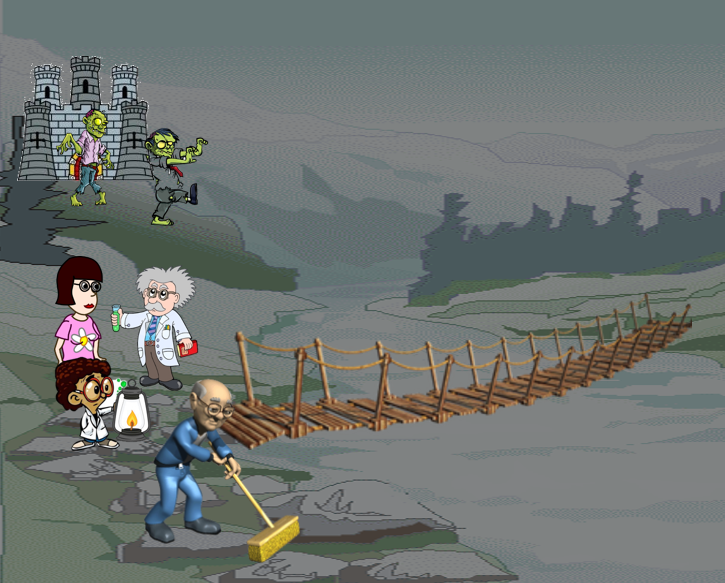
.png)
Acting out or creating a scene are two powerful ways students can use to tackle math story problems. These strategies are commonly used with younger learners, but they can be just as effective for older students—especially those who are kinesthetic or visual learners.
Encourage students to ask themselves: “Can I picture this?” or “Can I draw this?”
To set students up for success:
Make sure students have space to write or sketch out their thoughts. Dry erase boards work great. They allow students to erase and revise ideas easily without feeling stuck.
Here are some grade-specific examples that support this approach:
Problem: The building in the picture is made out of blocks.
How many blocks do you need to build the tower?

Problem: Each page of a photo album has 5 rows with 6 slots for pictures.
Two rows are filled with photos, and half of the remaining rows are also filled.
How many more photos do you need to fill the page?
Problem: People from Planet X have 3 ears.
People from Planet Y have 5 ears.
When 16 space people landed on Main Street, there were 62 ears listening to your welcome speech.
How many space people were from Planet X and how many from Planet Y?


Problem: A swimming pool is 25 feet wide and 40 feet long.
Around the pool is a path that is 4 feet wide on all sides.
What is the area of the path?
Problem: The zombies have awoken and are attacking your lab. In order to escape you and your crew must cross a rickety old bridge. According to the professor in the group, the zombies will catch up to you in just over 17 minutes. The bridge can only hold 2 people at a time and the lantern, that you must use in the dark, can only illuminate a little space in the dark so you must stick together when you cross. You can cross the bridge in 1 minute, your lab assistant can cross in 2 minutes, the janitor takes 5 minutes and the old professor takes 10 minutes. Can you get everyone over in time?

Whether students act out a scene or create a visual representation, storytelling and physical modeling help make math problems easier to understand—and far more engaging to solve.
Let’s make math meaningful by bringing it to life, one story at a time.